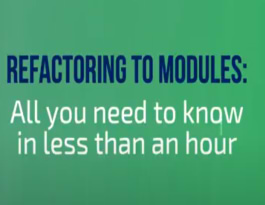errgroup Package Overview in Go @Golang NYC
November 9, 2021
< 1 min read
According to: https://pkg.go.dev/golang.org/x/sync/errgroup, Package errgroup provides synchronization, error propagation, and Context cancelation for groups of goroutines working on subtasks of a common task. In this lightning talk the Golang NYC User Group Meetup, Dima Gershovich walks us through errgroup use cases for you to maximize its uses in your everyday programming life.






